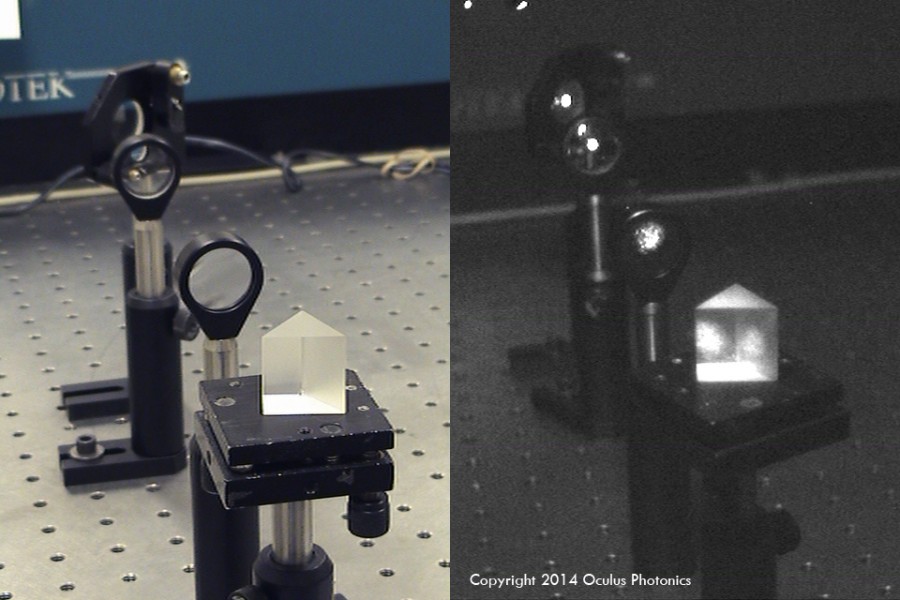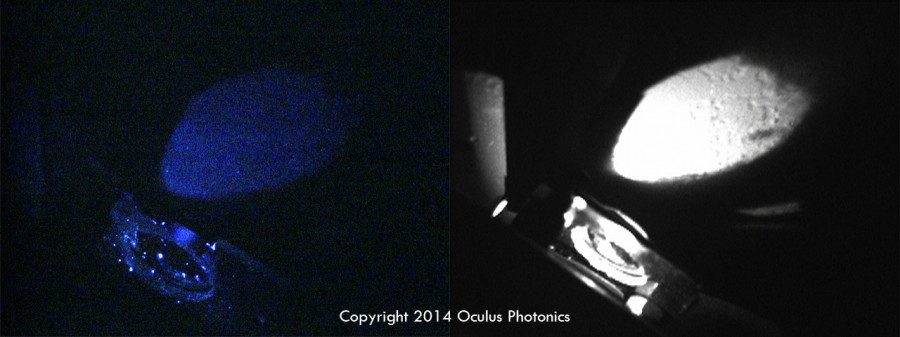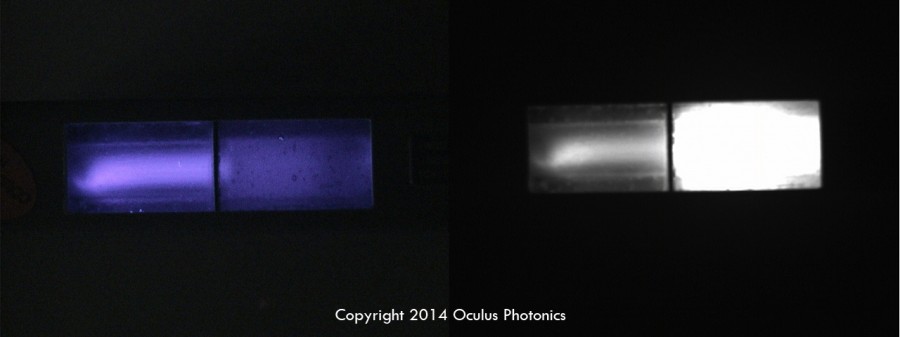Applications
Imaging ultraviolet light sources
The UVCorder will image ultraviolet light sources in the 300-420nm band, including pulsed nitrogen and excimer lasers. It can also image the light from gallium nitride UV LEDs and discharge lamp sources used for applications such as UV photolithography, LCD display annealing, photo-polymerized adhesive curing and scientific research. UV lasers are often hard to image unless something fluorescent is placed directly in the beam path such as a white business card, as is done in many laser labs. Visualizing a beam this way is not always possible to do if the optical path is inaccessible, nor is it desirable to intercept the beam with a reflective target, especially if it is delivered by a high-peak-power pulsed laser.

355nm laser beam and burned beamsplitter. Left-Visible, Right- UVCorder
Laser optics are prone to sustaining damage from intense pulsed lasers. This beamsplitter has been burned by a 355nm pulse from a frequency-tripled YAG laser, such that the surface scatters incident laser light, producing a bright UV spot near the center. There is no obvious way to detect this type of damage without an ultraviolet imaging system like UVCorder.

355nm laser beam and an optics train. Left-Visible, Right- UVCorder
The UVCorder images this 355nm laser beam as it propagates through various optical elements, including a prism, all of which have varying degrees of surface contamination.

365nm UV LED source projected onto a non-fluorescing surface. Left-Visible, Right- UVCorder
This 365nm gallium nitride LED is barely visible to the eye or to a standard silicon CCD camera, but is easily imaged by the UVCorder, even out on the dim edges of the light beam. Any dust or dirt on the surfaces can be detected before it gets burned into the surface.

Raytech dual-wavelength UV lamp. Left-Visible, Right- UVCorder
The Raytech Model PP1-LS is a battery-powered UV lamp based on a discharge lamp. It produces both long and shortwave UV light, which is selectively filtered by two different colored-glass filters. The left side of the lamp is the longwave filter.
